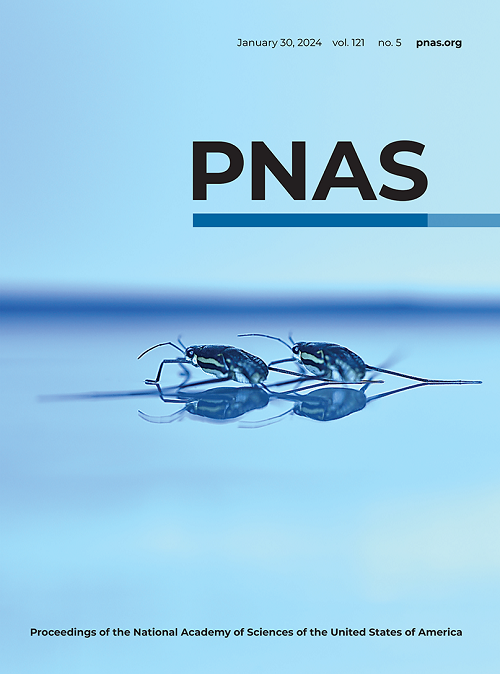Angelman综合征的临床前猪模型反映了人类病情的早期发育轨迹
IF 9.4
1区 综合性期刊
Q1 MULTIDISCIPLINARY SCIENCES
Proceedings of the National Academy of Sciences of the United States of America
Pub Date : 2025-07-21
DOI:10.1073/pnas.2505152122
引用次数: 0
摘要
天使综合症是一种以严重的运动和认知缺陷为特征的神经发育障碍。它是由印迹泛素蛋白连接酶E3A (UBE3A)基因的母系遗传等位基因丢失引起的。Angelman综合征的啮齿动物模型不能完全概括与该病症相关的所有症状,并且作为治疗发展的临床前模型受到限制。本研究表明,母系遗传UBE3A (UBE3A -/+)缺失的猪(Sus scrofa)会改变产后行为、发声受损、大脑发育减少、运动不协调和共济失调。新生儿UBE3A -/+猪表现出在Angelman综合征婴儿中观察到的几种症状,包括低张力、哺乳缺陷和发育不良。总的来说,这些发现与在Angelman综合征个体中观察到的病理生理和发育轨迹一致。我们期望这种猪模型将促进我们对天使综合征病理生理学的理解,并作为临床前大型动物模型用于治疗开发。本文章由计算机程序翻译,如有差异,请以英文原文为准。
A preclinical pig model of Angelman syndrome mirrors the early developmental trajectory of the human condition
Angelman syndrome is a neurodevelopmental disorder characterized by severe motor and cognitive deficits. It is caused by the loss of the maternally inherited allele of the imprinted ubiquitin-protein ligase E3A ( UBE3A ) gene. Rodent models of Angelman syndrome do not fully recapitulate all the symptoms associated with the condition and are limited as a preclinical model for therapeutic development. Here, we show that pigs ( Sus scrofa ) with a maternally inherited deletion of UBE3A ( UBE3A -/+ ) have altered postnatal behaviors, impaired vocalizations, reduced brain growth, motor incoordination, and ataxia. Neonatal UBE3A -/+ pigs exhibited several symptoms observed in infants with Angelman syndrome, including hypotonia, suckling deficits, and failure to thrive. Collectively, these findings are consistent with the pathophysiology and developmental trajectory observed in individuals with Angelman syndrome. We anticipate that this pig model will advance our understanding of the pathophysiology of Angelman syndrome and be used as a preclinical large animal model for therapeutic development.
求助全文
通过发布文献求助,成功后即可免费获取论文全文。
去求助
来源期刊
CiteScore
19.00
自引率
0.90%
发文量
3575
审稿时长
2.5 months
期刊介绍:
The Proceedings of the National Academy of Sciences (PNAS), a peer-reviewed journal of the National Academy of Sciences (NAS), serves as an authoritative source for high-impact, original research across the biological, physical, and social sciences. With a global scope, the journal welcomes submissions from researchers worldwide, making it an inclusive platform for advancing scientific knowledge.

 求助内容:
求助内容: 应助结果提醒方式:
应助结果提醒方式:


